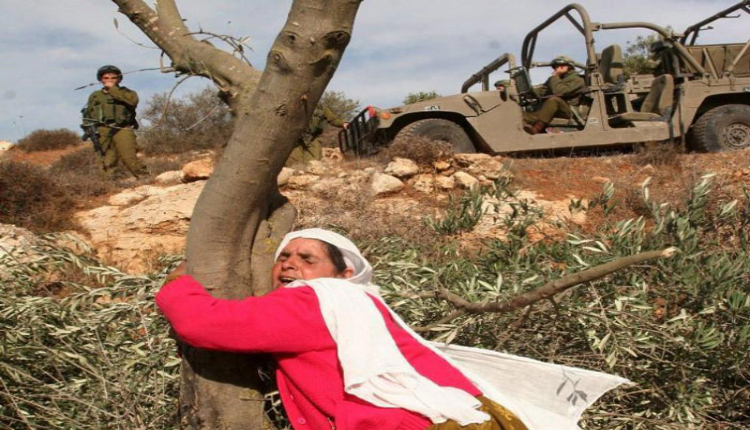In the early hours of Saturday the 28th of October, Palestinian farmer Bilal Saleh was found dead in his olive grove in the West Bank.
The occupation forces shot Bilai while attempting to harvest this year’s olive crop, a vicious incident that is repeated annually during olive harvest season.
Olive trees can live up to 1500 years, with an average lifespan of 500 years.
They represent the existence of the Palestinian people, which the occupation has been trying to erase for decades.
“The olive tree is the material and symbolic signification of the abject native that must be eliminated in both land and body.” said Lina Sharif in a paper titled Vanishing Palestine, Ethnic Studies scholar.
In an effort to drive Palestinians out of their land, settlers and the IDF target olive farmers and their groves.
According to Visualising Palestine, 800,000 ancient Palestinian olive trees have been uprooted since 1967, an area that is approximately equivalent to 33 Central Parks in NYC.
Settlers uproot olive trees, which Palestinians consider a family heritage passed from generation to generation, to plant pine trees.
In both the settlers’ and the Palestinians’ eyes, olive trees anchor the roots of the displaced Palestinians.
A pine tree symbolises a new beginning, while the olive tree sustains the presence of Palestinians.
It also serves as an emblem of their enduring yearning for an eventual return to their stolen lands.
Mahmoud Darwish
Palestinian poet Mahmoud Darwish recounts the tragic story of the 1956 massacre of 50 farmers in the Palestinian village of Kfar Kassem.
“The olive grove was once green,
At least it used to be… and the sky
was a blue forest… at least it used to be, my love
What changed it that evening? The olive grove was always green.
At least it used to be, my love. Fifty victims, at sundown
Turned it into a red pool… fifty victims.”
Mahmoud Darwish wrote in 1999.
However, olive tree roots are as immovable as Palestinian resistance, and will have a deep connection with the land till the end of times.
